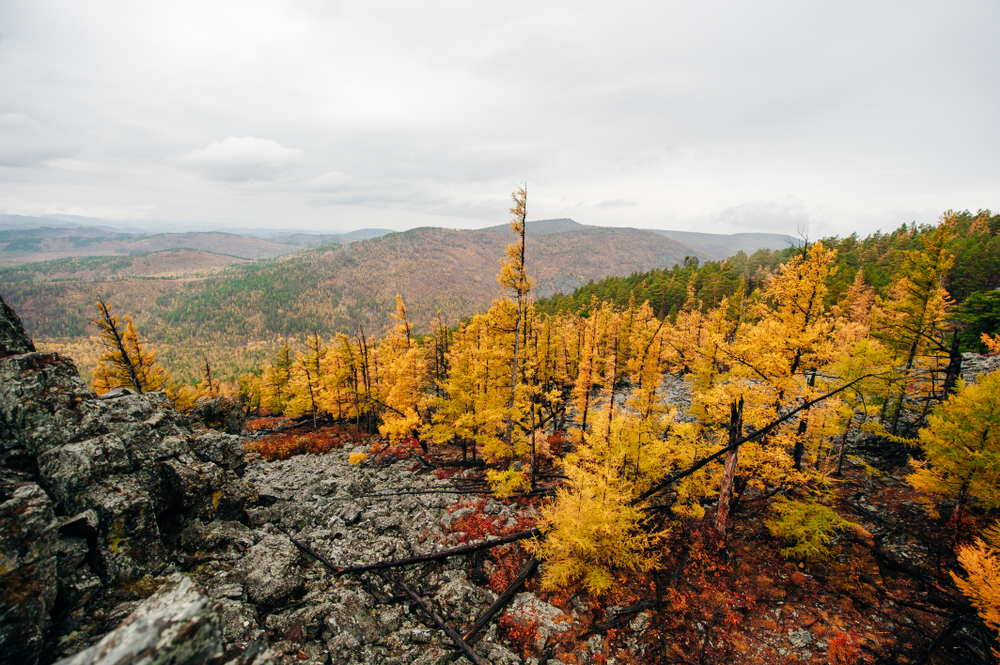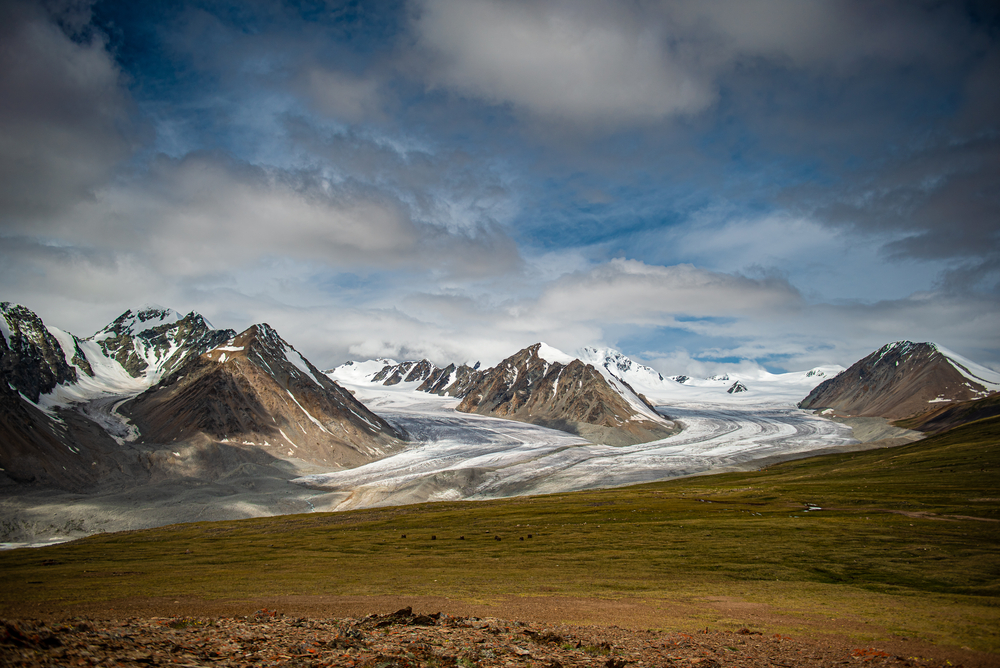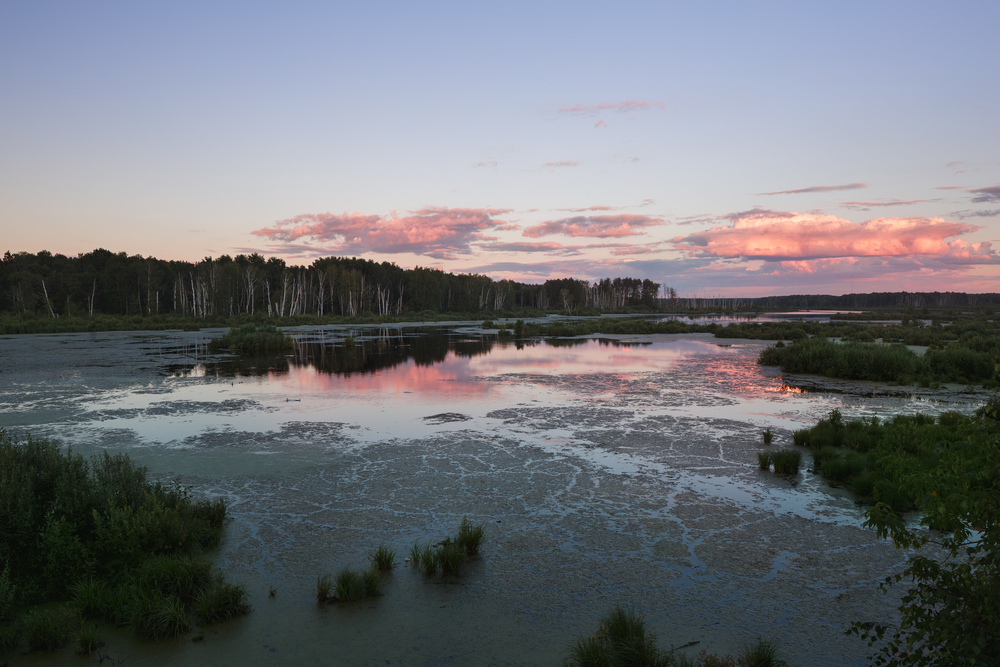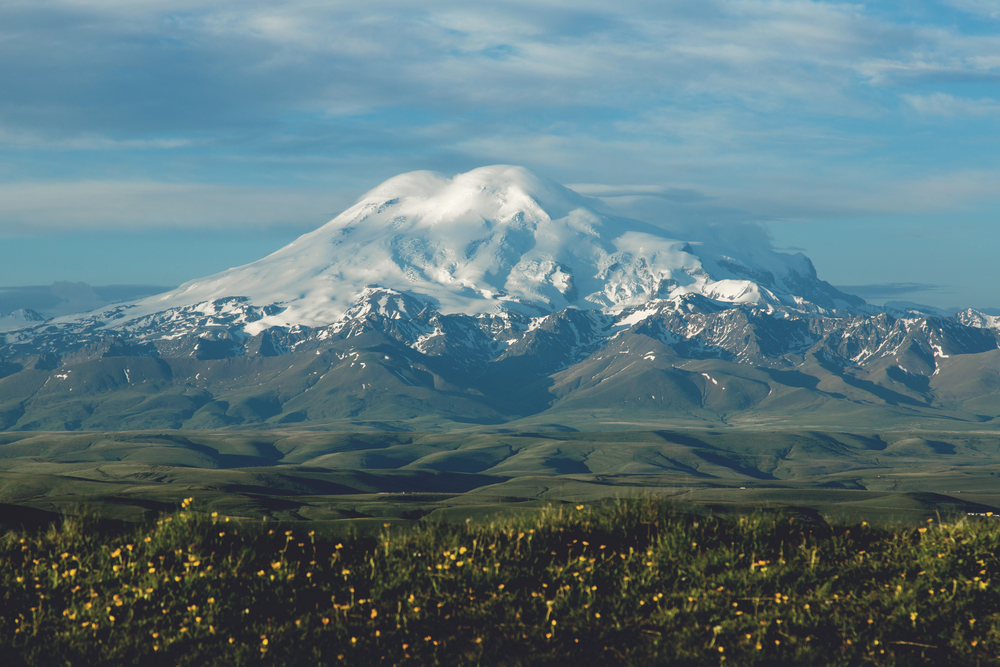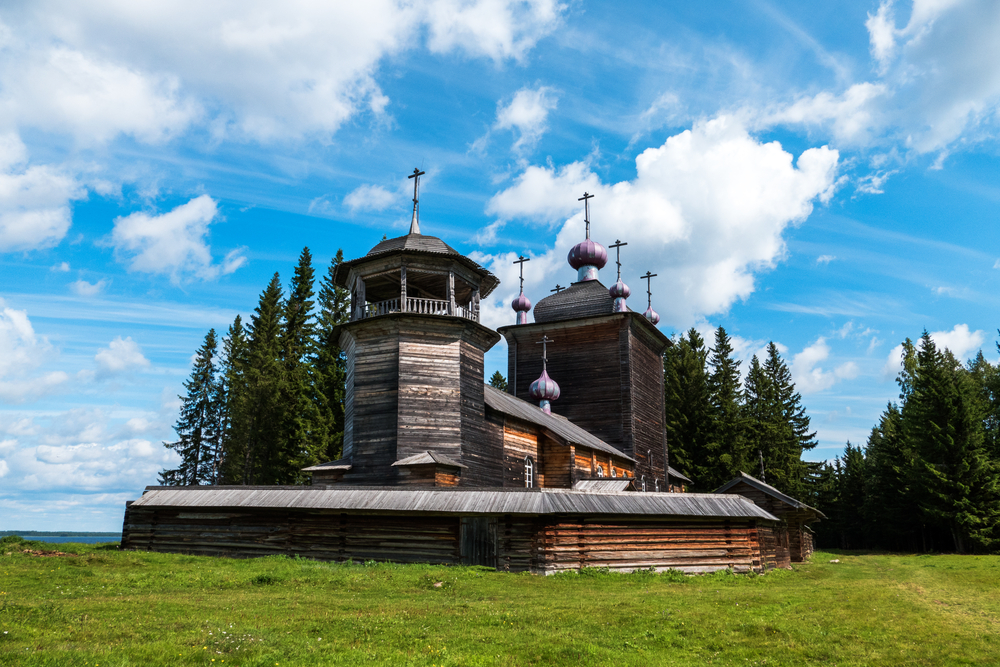Alkhanay Overview
Alkhanay National Park, located in the Zabaykalsky Krai region of southeastern Russia, spans approximately 641 square miles (1,660 square kilometers). Nestled within the Khentei-Daur Highlands, this park is known for its diverse landscapes, ranging from forested hills to rocky outcrops and deep river valleys.
The terrain is dominated by dense coniferous forests, primarily consisting of Siberian pine, larch, and spruce, interspersed with open meadows and rugged cliffs. One of its most significant features is Mount Alkhanay, a sacred peak revered in Buddhist traditions. The park is also home to several mineral springs and rock formations that hold religious and cultural significance, attracting visitors and pilgrims alike.
Wildlife within the park is both abundant and diverse, featuring species adapted to the harsh Siberian climate. Large mammals such as the Siberian roe deer, musk deer, and brown bear are commonly sighted. The park also provides habitat for lynxes, wolves, and the elusive Siberian tiger, although sightings of the latter are rare.
Birdwatchers can enjoy spotting species like the golden eagle, black stork, and various woodpeckers that thrive in the old-growth forests. Amphibians and smaller mammals, including squirrels and martens, add to the region’s ecological diversity.
One of the most popular attractions in Alkhanay National Park is the Alkhanay Rock, a revered site among Buddhists believed to possess spiritual healing properties. Pilgrims travel from across Russia and neighboring Mongolia to visit sacred caves, rock formations, and shrines scattered throughout the park.
The Burkhan Khaldun rock, a naturally occurring arch, is another key feature that draws visitors for its breathtaking views and religious significance. Numerous mineral springs, such as Arshan, are believed to have healing properties, attracting those seeking their therapeutic benefits.
Visitors to Alkhanay National Park can explore the landscape through a network of hiking trails that provide access to its most scenic and culturally significant sites. Trekking through the forested slopes offers breathtaking views of the highlands, while guided tours provide insight into the park’s religious importance.
Camping is a popular option for those looking to immerse themselves in nature, and many visitors participate in meditation and spiritual retreats within the park’s tranquil environment. Photography and birdwatching are also popular activities, given the park’s rich biodiversity and striking natural features.
One of the key conservation challenges faced by Alkhanay National Park is the impact of increasing tourism on its fragile ecosystems and sacred sites. While the influx of visitors boosts local economies, it also necessitates careful management to prevent habitat degradation and disturbances to wildlife.
Conservation efforts have been successful in maintaining the integrity of the park’s forests and protecting its biodiversity through strict regulations on hunting and land use.
Additionally, collaboration between local Buddhist communities and park authorities has helped preserve the spiritual and cultural significance of Alkhanay’s landscapes, ensuring that both ecological and religious values are safeguarded for future generations.








































































